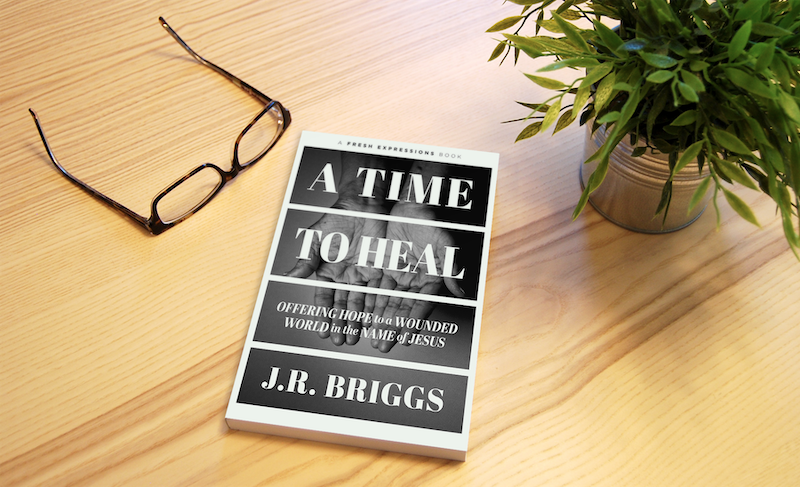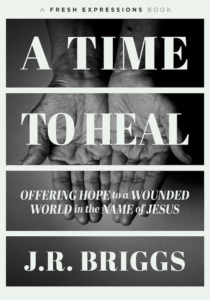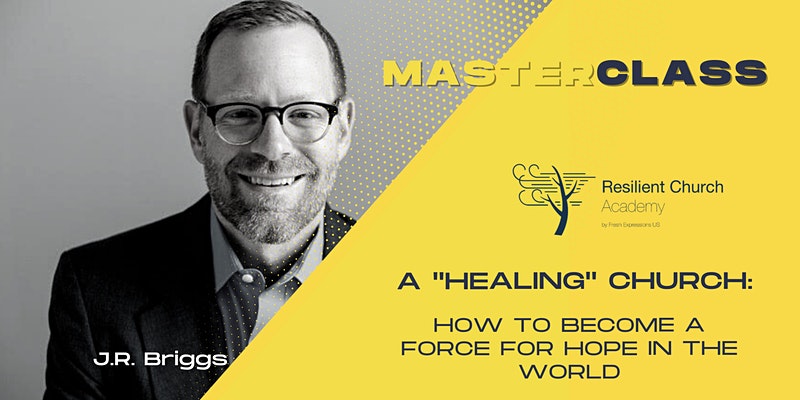The world has been wounded, all while the Church in the West continues to lose credibility and authority. Christian history is full of examples of faith-filled compassionate followers of Jesus who ran toward those who were disgraced, neglected, and wounded. We’re grateful to read stories of the past, but what about the future? After the year we’ve had, our call is to train our eyes – and help other people look for those in need of healing, even when it isn’t always apparent.
After the year we’ve had, our call is to train our eyes – and help other people look for those in need of healing, even when it isn’t always apparent.
Tweet this.
If the world is ever going to consider looking in the direction of church for its healing as we emerge from this pandemic, we must first look in these ten specific areas.
-
We must see the Bible as a book written to traumatized people.
Consider who the Bible was most frequently written to. The Scriptures – both Old and New Testaments – were not written to comfortable, healthy people in power, but instead to a group of discouraged, displaced, distressed, and oppressed people marked by trauma. The book of Lamentations and much of the Psalms contain raw and desperate prayers of suffering people.
Think of the stories of traumatized people found in the Bible. It’s everywhere: Hagar, Joseph, Jonah, and Job. Noah’s family witnessed the destruction of the world through a global flood. The entire nation of Israel was enslaved and in exile by the oppressive, unjust pagan nation of Egypt. Tormented parents in Bethlehem who had experienced infanticide. Mary Magdalene was delivered from not one, but seven demons. John the Baptist experienced a gruesome beheading at a royal banquet. Jesus suffered naked on the cross through harrowing crucifixion. Early Christians were arrested, persecuted, and executed in the book of Acts. If the Old Testament was written mostly to the people of God who were in exile, and if both testaments were written to people who were oppressed, traumatized, and suffering, how might this shape how we read our Bibles today?[1]
One of the simplest and most practical ways for congregations to cultivate a good kingdom imagination as healers is to allow the biblical text to shape our individual and collective thinking. If we can see the overarching story of Scripture – the shalom-creating God and a shalom-rejecting humanity, who are traumatized and in need of being saved, delivered, and healed by a shalom-bringing Jesus – our people will begin to see more fully the vision of what it means to live like Jesus. But it may mean pastors need to preach other difficult texts not often preached on, such as the Psalms of Lament.
-
Listen to – and tell – stories.
Stories have healing power because stories connect us. If trauma and woundedness is the experience of disconnection, conversely then, healing is about connection. When people tell their stories, and they know their stories are being heard by someone who cares about them, it often allows healing to blossom. Artists, musicians, poets – even comedians – share that the basis of their craft is rooted in the ability to experience healing through the expression of their reality. This often leads to others being
-
Look for the trauma.
We can’t help people heal if we aren’t aware of their trauma, and it doesn’t help that the word trauma is a bit slippery. It can feel vague. We can say to our friend that watching our team lose in the championship was traumatic, or we may have swerved out of the way of an oncoming car and narrowly avoided a head-on collision which left us shaking for the next thirty minutes. Or, we experience trauma that remains with us decades after a horrific incident occurs. But a true understanding of trauma is seen as the inability to process our grief or resolve our pain. It can be any life event that leads to feeling alone and without help or support.[2] It affects your entire being – mind, body, and spirit.
One of the most practical places to start is by growing in awareness. Consider conducting a trauma audit in your church, among your circle of friends, or within your neighborhood. Simply list out the people who’ve experienced trauma and the type of trauma they’ve experienced. What are the themes or specific types of trauma present in your context? What might be the root of it? How are you noticing the people you’ve listed being kept from flourishing because of their trauma?
-
Explore your own wounds and trauma.
If we are to be healers, we need to address our own trauma and woundedness. God, in his undeserved kindness, uses people to help in the healing process who are also in their own process of healing as well. We must position ourselves in ways where God can do his healing work in us, even as he provides his healing work through us. We must be aware that trauma brings a whole assortment of issues to our minds, bodies, and souls: shame, exposure, confusion, fear, loss of joy, feelings of powerlessness, isolation, depression, insomnia, loss of trust, loss of pleasure, distortion of reality, anger, a desire to escape, anxiety, and hyperawareness, among other things.
God, in his undeserved kindness, uses people to help in the healing process who are also in their own process of healing as well.
Tweet this.
As caregivers and healers, we must make sure we are receiving care and healing ourselves. Richard Rohr wrote, if we do not transform our pain, we will most assuredly transmit it – usually to those closest to us. Therefore, we must do the difficult inner work of processing with ourselves, with God, and with other trusted, wise, and safe individuals.
-
Look for tears – in others and in yourself.
Frederick Buechner famously wrote:
Whenever you find tears in your eyes, especially un- expected tears, it is well to pay the closest attention. They are not only telling you something about the secret of who you are, but more often than not God is speaking to you through them of the mystery of where you have come from and is summoning you to where, if your soul is to be saved, you should go to next.[3]
Tears, it has been said, are liquid prayers. When I sit with people who begin to cry, I seek to hold space for God’s presence to be felt. When appropriate, I gently remind people that tears are liquid prayers. I often ask if they are able to articulate the words their face is praying in the moment.
-
Look for everyday practices and elements where healing can occur.
If we’re not careful, we can assume healing can only happen in a doctor’s examination room, on a counselor’s couch, or when a professional is writing a prescription. Certainly, those spaces are significant and important. But people heal in a myriad of other ways – ways that are less formal, more relational, and available to participate in any given day.
Healing happens when people strongly sense they are in a safe place to tell their story – and to hear others tell their stories. The most impactful stories are ones of courageous vulnerability where others want to whisper, “Me, too.” Like Jesus, physical touch and embrace – when wise and appropriate – are other ways in which people heal. Being present with others and showing up. Laughing together. Crying together. Telling stories together. Reflecting and processing safely with others. Praying together. Sitting in silence and stillness with no expectation. These are practices, activities, and spaces available to each and every one of us. You don’t need a degree or loads of experience to engage in their practices with others who are wounded.
-
Look for the healers who are already in your midst.
In every congregation, there are people who spend their vocational lives helping others heal – doctors, nurses, physical therapists, dentists, trainers, and/or other medical professionals. Maybe you’re one of them.
How might you invite medical professionals to come together and brainstorm, pray, and collaborate on how they might combine their unique callings together to serve in the name of Jesus? How might they pray for their patients and clients, as well as for one another, that God would use them in order to respond to physical suffering with compassionate presence and a tangible hope to bring shalom through the power of the Spirit?
And, in all likelihood, your church also includes counselors, therapists, social workers, school counselors, psychiatrists, mental health support specialists, and others who spend their weeks helping in the mental and emotional health fields. What would it look like for these women and men to dream together how they might provide mental and emotional healing in the community?
What if the business people in your church – those in the financial industry, small business owners, bank employees, and accountants – worked together to provide financial counseling services to those in need?
What if the artists in your community rallied together to pro-vide sacred space to help people articulate the inner groaning in ways words simply cannot? What if those gifted with the pen could teach and encourage others to recontextualize Psalms, including Psalms of Lament, by having people writing a psalm in their own words in order to express your communal story in order to help people name their pain?
-
Look for the passions in your congregation.
In an average church, most people may have little professional training, degree, or experience in healing. However, the divorced young mother of four knows something about pain, as does the survivor of childhood sexual abuse. So does the widow of seventeen years, and the army vet with a PTSD diagnosis. These people are in your congregations. Do you see them?
These seemingly ordinary (yet truly inspiring) people want to be counted among those bringing healing in the name of Jesus. Unfortunately, they often feel underqualified or disqualified altogether, believing they don’t have much to offer. But they do have a great deal to offer. In fact, they might even have the most to offer. How might we recognize, call out, empower, unleash, release, and celebrate them in their desire to join God’s mission (Eph. 4:12-16)? How might their stories be highlighted? Where could we affirm them and then invite them into spaces and opportunities to further steward their wounds for good in the world?
-
Look for the healers within your broader community.
Bringing healing is always a communal venture. We must stand shoulder to shoulder with other leaders in our ZIP codes. As some churches are given some specific charisms – gifts from the Holy Spirit – other churches are graciously given different gifts. We often read Paul’s metaphorical imagery of the body of Christ myopically. When Paul wrote of the different body parts, he wasn’t wanting us to think merely about those in our specific local church (1 Cor. 12:12-31); instead, he desired for God’s people to think with a larger more holistic understanding of the body across ZIP codes and denominations, without barriers or borders. One church may be full of healers in one particular area, while another church may be passionate about another expression of healing to address suffering in the community. Are we aware of the gifts each local church around us possesses? And if so, how can we attempt to cultivate a gospel vision for kingdom partnerships to develop for great effectiveness in our communities?
Ask yourself this simple question: when there is great pain, tragedy, or need in your community, where do people immediately think to turn to for help?
- Where do people look when they are addicted or evicted?
- Where do people go when they are stressed or depressed?
- Where do people look when they need financial assistance?
- Where do people look for help when their home was destroyed by fire, or when they find out their teenager is contemplating suicide?
Whoever they might turn to, plain and simple: look for ways to partner with them. Call and ask, “How can we link arms and serve?”
-
Look for future healers.
It’s also easy to overlook younger generations. We can make the tragic assumption that younger people haven’t had enough life experience to know what suffering is really like or, even worse, they don’t want to help others. Unfortunately, a significant percentage of people who have experienced pain and suffering have been children and youth. While they need care and healing, part of their own healing may include helping others who are suffering. Who are the middle school, high school, and college students in your midst just waiting to be called off the bench to serve? Younger generations want to make a difference.
But this isn’t just for younger generations. Look for laypeople of all ages in your congregations who are hungry to help others in the future. Almost anyone can be trained in trauma response. Dr. Phil Monroe, director of the American Bible Society’s Trauma Healing Institute, trains people who want to bring healing by addressing trauma. He offers: “The secret ingredient to trauma is social connection. The lack of social connection will most likely increase traumatic symptoms. But when it is present it is often something that ameliorates and erases symptoms .”
Monroe offers three questions people can ask others who have experienced trauma: What happened? How did that make you feel? What was the hardest part? For those who have experienced severe trauma, he offers a fourth: I’m curious: what helped you survive today? Then he states: stop talking and just listen. Don’t offer advice. Don’t sermonize. Just listen. When you do this, people begin to open up and connect. And when deep connection occurs, people begin to experience healing.
Christians through the centuries have risen to the occasion in times of crisis, desperation, pain, and loss. Right now the world is looking for healers. Will we join Jesus in the healing for the sake of the world?
Tweet this.
Christians through the centuries have risen to the occasion in times of crisis, desperation, pain, and loss. They’ve run toward the pain, not away from it. Right now the world is looking for healers. It is a time to heal. Will we join Jesus in the healing for the sake of the world?
Adapted from J.R. Briggs’ book A Time To Heal: Offering Hope To a Wounded World in the Name of Jesus (from chapter 4: How Will the Church Be the Body of Christ to a Hurting World?)
Receive a FREE COPY of A Time to Heal when you register for J.R.’s Resilient Church Academy Master Class!
[1] Dr. Phil Monroe, Fresh Expressions U.S. Resilient Church Academy: Trauma Healing Academy Track webinar, August 19, 2020.
[2] E. James Wilder, Anna Kang, John Loppnow, Sungshim Loppnow. Joyful Journey: Listening to Immanuel (Los Angeles: Presence and Practice, 2015), 26.
[3] Frederick Buechner, Whistling in the Dark: A Doubter’s Dictionary (San Francisco, HarperOne, 1993), 117.




